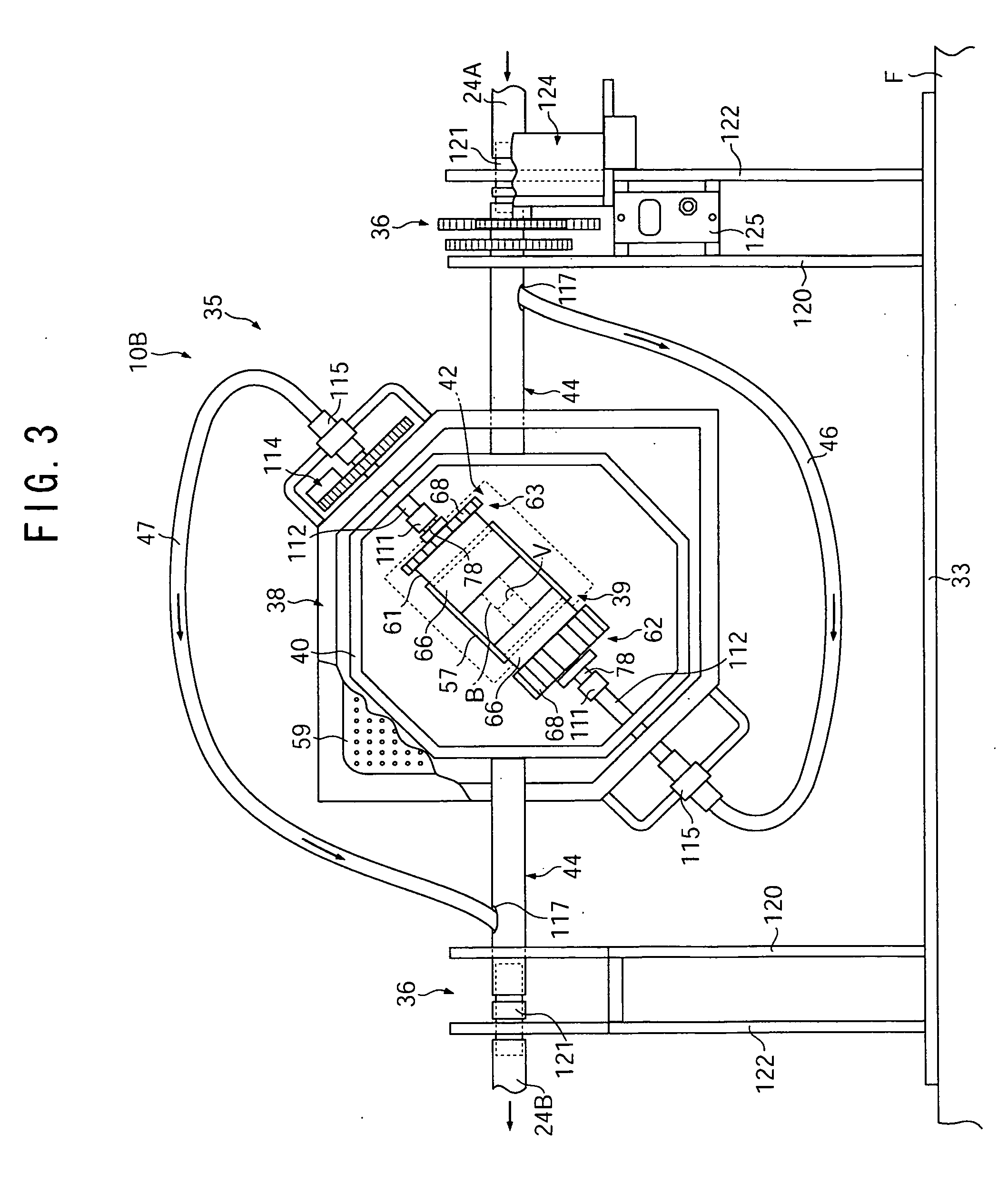Method of removing cell
a cell and cell technology, applied in the field of cell removal method, can solve the problems of insufficient inability to obtain a sufficient number of allogeneic bioprosthetic valves, and inability to achieve sufficient biocompatibility of xenogenic bioprosthetic valves, so as to achieve the effect of further enhancing the effect of cell removal
- Summary
- Abstract
- Description
- Claims
- Application Information
AI Technical Summary
Benefits of technology
Problems solved by technology
Method used
Image
Examples
example 1
[0080] In Example 1, bile acid of 37° C. was used as a cell-removing solution. The bile acid was injected into the circulation apparatus 10A and allowed to flow so as to correspond to the human blood (pulsatile flow) in the aorta. A swine blood-vessel tissue containing the aortic valve was allowed to leave alone in the flow for 24 hours. At this time, the circulation apparatus 10A was operated under conditions: an average flow rate: 5 L / minute, a pulsating rate (beating rate) of the driving pump 12: 70 times / minute, an average liquid pressure of the bile acid: about 90 mmHg where the maximum and minimum pressures of the liquid were allowed to correspond to the maximum and minimum pulse pressures of a typical person, respectively. After treatment, the blood-vessel tissue was observed under a microscope and the magnified view was taken by a camera. Original cells (endothelial cell and fibroblast cells) remaining in the blood-vessel tissue were counted to obtain an average number of or...
example 2
[0082] In Example 2, a predetermined microwave was applied to a blood-vessel tissue while rotating by the retention unit 10B in addition to the conditions of Example 1. The microwave having a frequency of 2.45 GHz was used herein and applied under the following three different conditions by varying power and irradiation time: a power of 100 W for 8 hours, a power of 500 W for 12 hours, and a power of 500 W for 24 hours. In all cases, the blood-vessel tissue was rotated 4 times per minute in a self-rotation manner. Original cells remaining in the blood-vessel tissue were counted in the same manner as in Example 1 and an average cell number per unit area (1 mm2) was obtained.
[0083] As a result, about 380 original cells remained per unit area when microwave was applied at a power of 100 W for 8 hours. On the other hand, in the cases where microwave was applied at a power of 500 W for 12 hours and 24 hours, no original cells were observed to remain. In addition, the protein contained i...
example 3
[0088] In Example 3, after the cell-removing process, the blood-vessel tissue was washed with normal saline solution for about one hour and immersed in fibronectin for 4 hours. In parallel to this, autologous cells (endothelial cells) were taken from a recipient's living body to be transplanted to prepare a cell-containing solution. The cell-containing solution used herein was prepared by culturing the autologous cells thus taken in a culture plate containing M199 for 5 days, removing the autologous cells cultured from the culture plate with trypsin, and adding to M199. The cells were cultured in M199 supplemented with FBS (Fetal Bovine Serum IWK-500, manufactured by Iwaki), antibiotics (penicillin / streptomycin mixed solution) and FGF-2 (manufactured by Pepro Tech Ec Ltd.).
[0089] Thereafter, the blood-vessel tissue was immersed in the cell-containing solution for about 4 hours while rotating the blood-vessel tissue up and down. After the cell-seeding process, the blood-vessel tissu...
PUM
 Login to View More
Login to View More Abstract
Description
Claims
Application Information
 Login to View More
Login to View More - R&D
- Intellectual Property
- Life Sciences
- Materials
- Tech Scout
- Unparalleled Data Quality
- Higher Quality Content
- 60% Fewer Hallucinations
Browse by: Latest US Patents, China's latest patents, Technical Efficacy Thesaurus, Application Domain, Technology Topic, Popular Technical Reports.
© 2025 PatSnap. All rights reserved.Legal|Privacy policy|Modern Slavery Act Transparency Statement|Sitemap|About US| Contact US: help@patsnap.com



